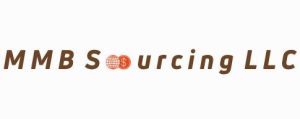Trading and sourcing products in the United States can open a myriad of opportunities for businesses worldwide. With its diverse market, advanced infrastructure, and vast consumer base, the USA is an attractive destination for both established companies and new ventures. However, navigating this landscape requires a nuanced understanding of its complexities and potential hurdles.
The Opportunity Landscape
- Consumer Base: The United States boasts a population of over 330 million people, offering an expansive consumer base. The market is diverse, encompassing a wide range of preferences and needs. This diversity enables businesses to find niche markets and target specific demographics.
- Robust Economy: The U.S. has one of the world's largest and most stable economies, creating a fertile ground for trade. The country's strong financial system and transparent legal framework support business operations and minimizes risks.
- Innovative Ecosystem: The United States is home to numerous innovation hubs such as Silicon Valley and Boston. These regions offer cutting-edge technology, skilled labor, and venture capital, making them ideal for sourcing innovative products and services.
- Trade Agreements: The USA has trade agreements with many countries, which can facilitate smoother and more cost-effective import and export processes. These agreements can provide significant benefits, such as reduced tariffs and simplified customs procedures.
Navigating the Challenges
- Regulatory Compliance: The U.S. has stringent regulations and standards that products must meet before they can enter the market. Understanding and complying with these regulations is crucial to avoid legal issues and ensure market access.
- Logistics and Supply Chain: The vast geographical size of the United States means that efficient logistics and supply chain management are critical. Businesses must plan for transportation, warehousing, and distribution to ensure timely delivery of products.
- Competition: The U.S. market is highly competitive, with numerous domestic and international players vying for consumer attention. Building a strong brand presence and offering unique value propositions are essential strategies to stand out.
- Cultural Sensitivity: Given the cultural diversity of the United States, businesses must tailor their products and marketing strategies to resonate with different segments of the population. Understanding local preferences and cultural nuances can significantly impact success.
Strategies for Success
- Market Research: Conducting thorough market research is the foundation of successful trading and sourcing in the USA. Identify target demographics, assess competitor strategies, and understand consumer behavior to inform your business decisions.
- Networking and Partnerships: Building relationships with local partners, distributors, and suppliers can provide valuable insights and support. Attend trade shows, join industry associations, and leverage networking opportunities to establish a strong business network.
- Leverage Technology: Utilize advanced technologies such as data analytics, AI, and automation to streamline operations and gain a competitive edge. Technology can enhance supply chain efficiency, optimize marketing efforts, and improve customer experiences.
- Adapt and Innovate: The U.S. market is dynamic, with evolving trends and consumer preferences. Stay agile and be willing to adapt your products and strategies to meet changing demands. Continuous innovation is key to maintaining relevance and driving growth.
Conclusion
Trading and sourcing products in the USA present both opportunities and challenges. With careful planning, a deep understanding of the market, and strategic execution, businesses can successfully tap into this lucrative market. The key lies in being informed, adaptable, and proactive in navigating the complexities of the U.S. trading landscape.
So, whether you're a seasoned trader or a newcomer looking to enter the U.S. market, keep these insights in mind to chart a path to success.


Hi, this is a comment.
To get started with moderating, editing, and deleting comments, please visit the Comments screen in the dashboard.
Commenter avatars come from Gravatar.